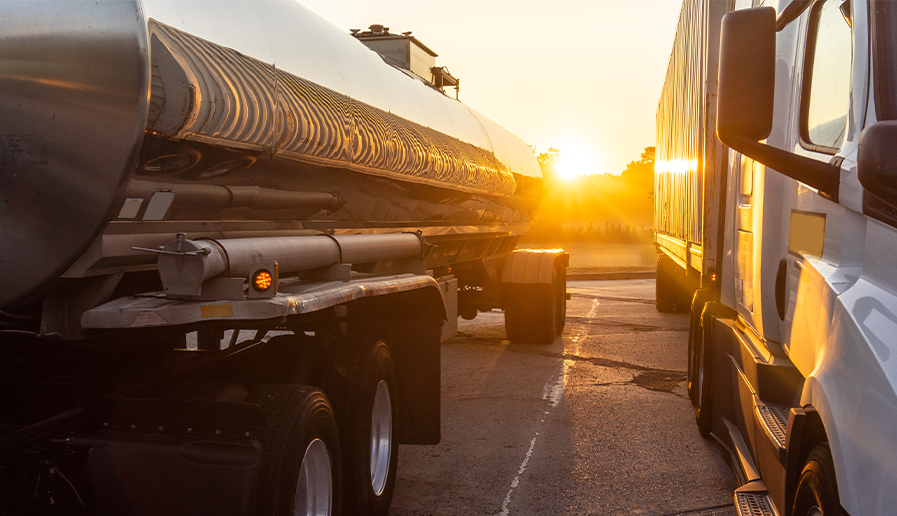
Posted on
The modern supply chain spans long distances and involves multiple forms of transportation including rail, truck, and ship. Transloading enables smooth transitions between these modes, helping businesses adapt quickly to logistics constraints or route changes.
Transloading is the process of transferring materials from one mode of transportation to another, such as moving goods from a railcar to a truck. It’s a key strategy for optimizing shipping routes, cutting costs, and improving delivery speed especially for bulk and liquid freight.
Third-party logistics (3PL) warehousing providers are specifically equipped to handle this complexity due to their infrastructure, knowledge, expertise, and tech-driven systems. They seamlessly coordinate the movement of goods between modes, all while reducing handling time and minimizing risk.
In this guide, we’ll break down the ins and outs of transloading, explore the key benefits and real-world use cases, and share what to look for when choosing the right 3PL partner to support your logistics strategy.
What is Transloading?
Transloading refers to the process of transferring goods from one mode of transportation to another during the shipping journey. Common examples include moving freight from a railcar to a truck, or transferring liquid materials from a tank to an intermediate bulk container (IBC) like a tote. This practice is especially valuable when shipping routes involve multiple transport types that don’t connect directly or when products need to be repackaged for regional delivery.
Transloading facilities, often operated by 3PL warehousing providers, are equipped with the necessary infrastructure such as loading docks, forklifts, cranes, pumps, storage tanks, and inventory systems to handle these transitions efficiently and safely.
In both international and domestic supply chains, transloading plays a pivotal role by increasing route flexibility, reducing transportation costs, facilitating imports and exports, improving supply chain agility, and supporting bulk and liquid freight. Whether it’s repackaging materials, consolidating loads, or switching transport modes, transloading gives logistics teams the ability to fine-tune how goods move through the chain.
How Warehousing 3PLs Streamline Transloading Logistics
Warehousing 3PL providers play an essential role in simplifying transloading logistics. By integrating storage and transloading under one roof, 3PLs eliminate the need for multiple vendors, reduce handling time, and minimize the risk of delays and errors.
3PLs are equipped with specialized infrastructure that supports liquid freight. For example, rail spurs provide direct access for rail shipments to be unloaded straight into the warehouse for easy transfer to trucks, while loading docks allow seamless movement of goods between transport vehicles. Additionally, they offer tank fittings for liquid goods, ensuring efficient transfers.
These providers also offer additional services like reverse filling, where empty containers are refilled and sent back, product heating for temperature-sensitive goods, and advanced inventory management systems to track goods in real-time. This combination of services streamlines the logistics process, reduces costs, and enhances supply chain agility.
By leveraging 3PLs for transloading, businesses can optimize their operations, remain flexible, and maintain better control over their supply chains.
Types of Transloading Services Offered
- Bulk Liquid Transloading: railcars, road tankers, ISO tanks, flexi-tanks
- Reverse Filling: transferring from drums/totes into bulk containers
- Temperature-Controlled Transloading: heating systems for drum, totes and railcars

Benefits of Transloading with a 3PL Warehousing Partner
Partnering with a 3PL warehousing provider for transloading brings key advantages to your logistics operations:
Cost Savings
Using rail transport for long hauls reduces over-the-road transportation costs, making shipments more affordable while maintaining efficiency.
Flexibility
3PLs offer multi-modal transport options, giving you access to distribution hubs and enabling easy adjustments based on changing delivery needs.
Speed
With faster transitions between transport methods, transloading accelerates delivery timelines, ensuring goods arrive quicker to their final destination.
Scalability
3PLs help businesses scale operations during peak seasons or market expansion, easily handling fluctuations in shipment volumes.
Lower Carbon Footprint
Rail is more fuel-efficient than trucks, helping reduce the carbon footprint of long-haul shipments and promoting sustainable logistics practices.
Transloading with a 3PL partner enhances cost-efficiency, flexibility, speed, scalability, and sustainability, streamlining your logistics operations. Whether a business is dealing with bulk, liquid, or dry goods, the ability to efficiently transfer products between rail, truck, or other transport modes helps streamline operations and improve delivery times.
If you’re looking to take your logistics strategy to the next level, explore how USA Warehousing can optimize your supply chain through their efficient, reliable transloading services. With the right 3PL partner, your business can stay ahead of the competition and keep goods moving smoothly, no matter the distance.
